Weevils are a family of beetles that have their mandibles (mouths) at the end of a very long snout-like projection. Palmetto weevil (Rhynchophorus cruentatus) is the largest North American weevil and is present in many southern states from Florida to the coastal regions of South Carolina and west into coastal Texas.
Adults and Larvae
Adult palmetto weevils have been found during every month of the year in Florida. They are about 1.97 inches long and 0.79 inches wide and have highly variable colorations, from completely black to almost completely red with a variable black pattern. Adult females lay eggs in the leaf bases of the crowns near existing wounds. The larvae, or grubs, quickly tunnel into the heart (meristem) to feed which eventually destroys the palm. The larvae (grubs) are legless and creamy to yellowish in color and up to 2.52 inches long and 0.98 inches wide. They are conspicuously larger than adults. Their prominent heads are dark brown and very hard. Multiple generations can occur, with the life cycle taking about three months to complete under optimal conditions.

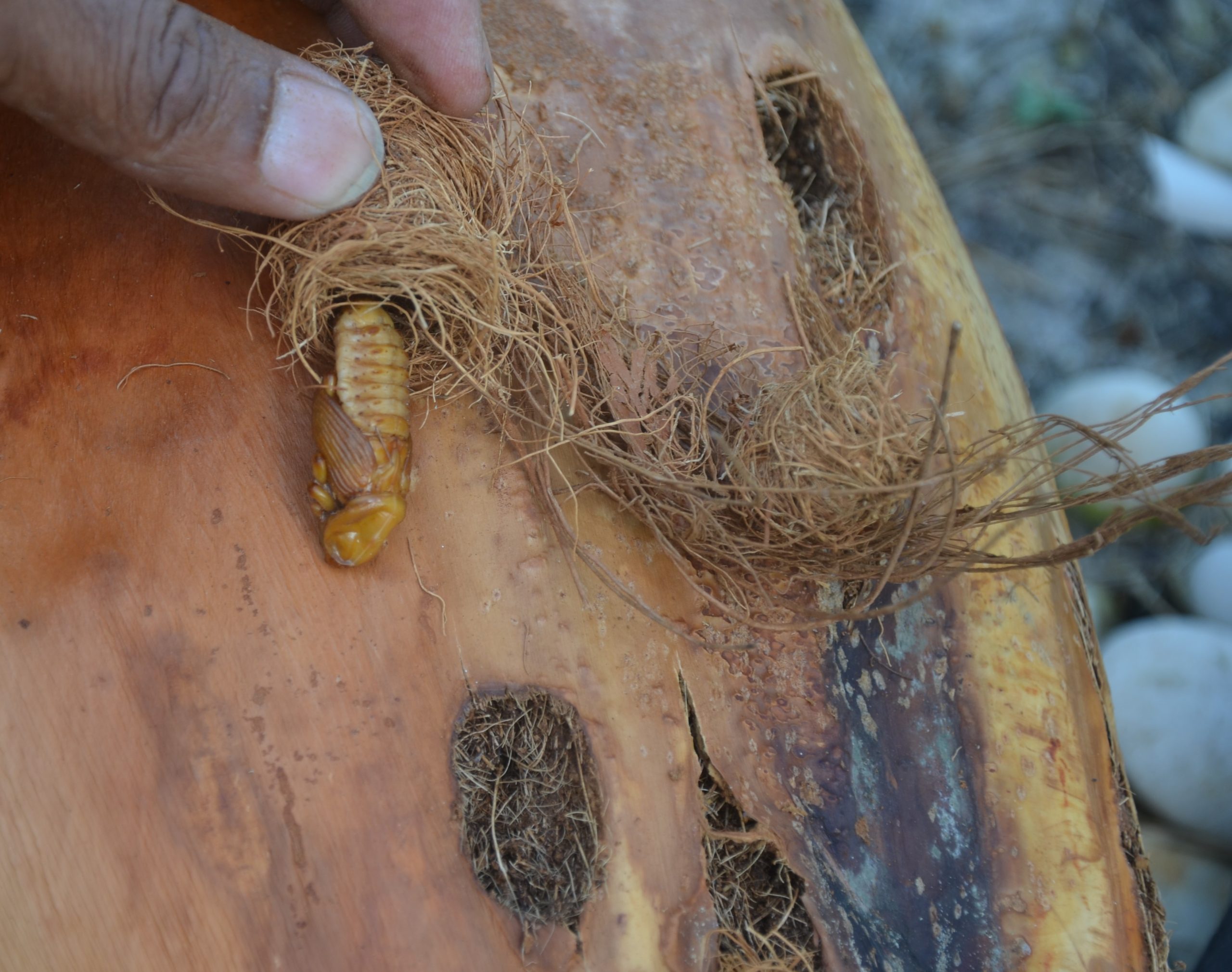
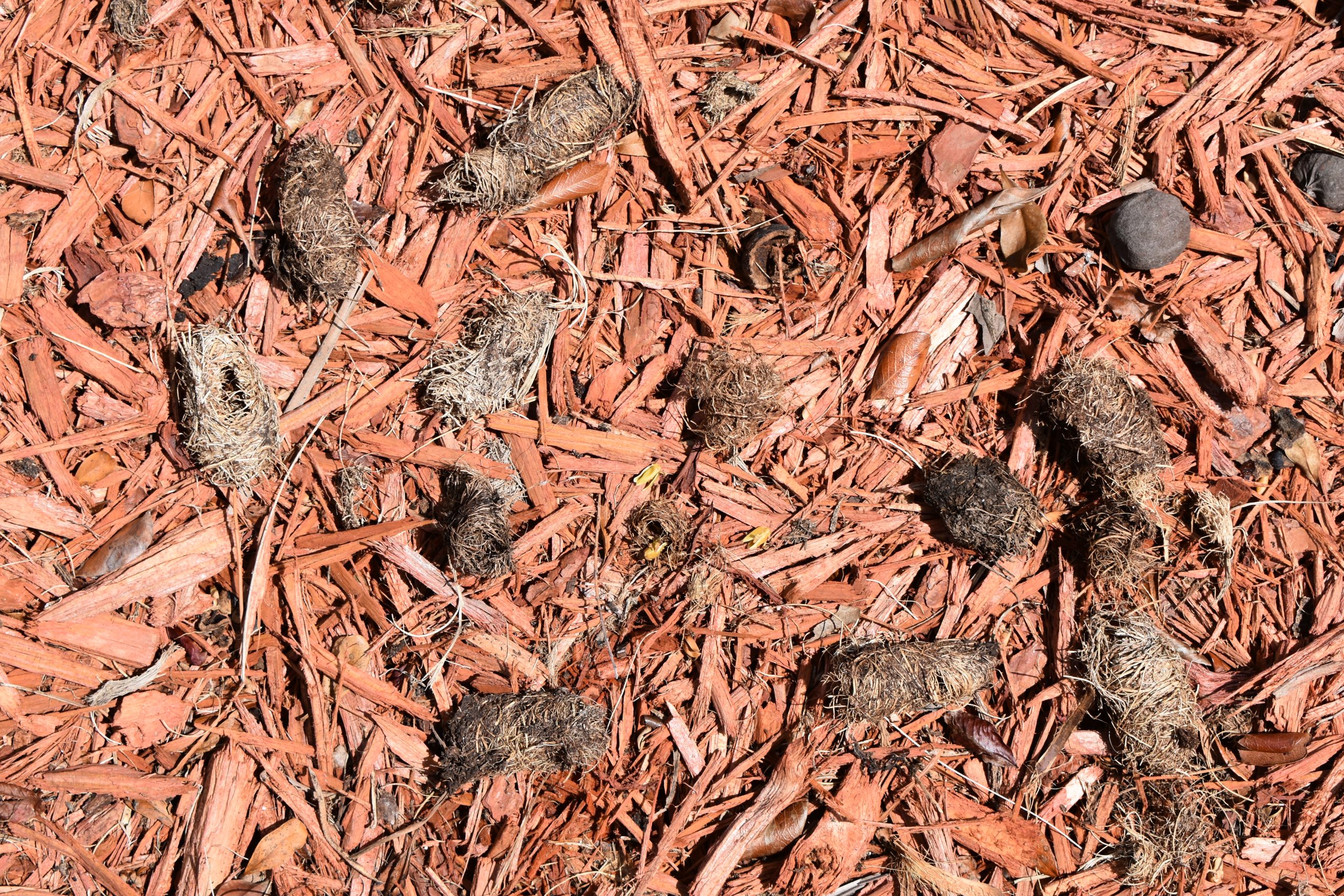
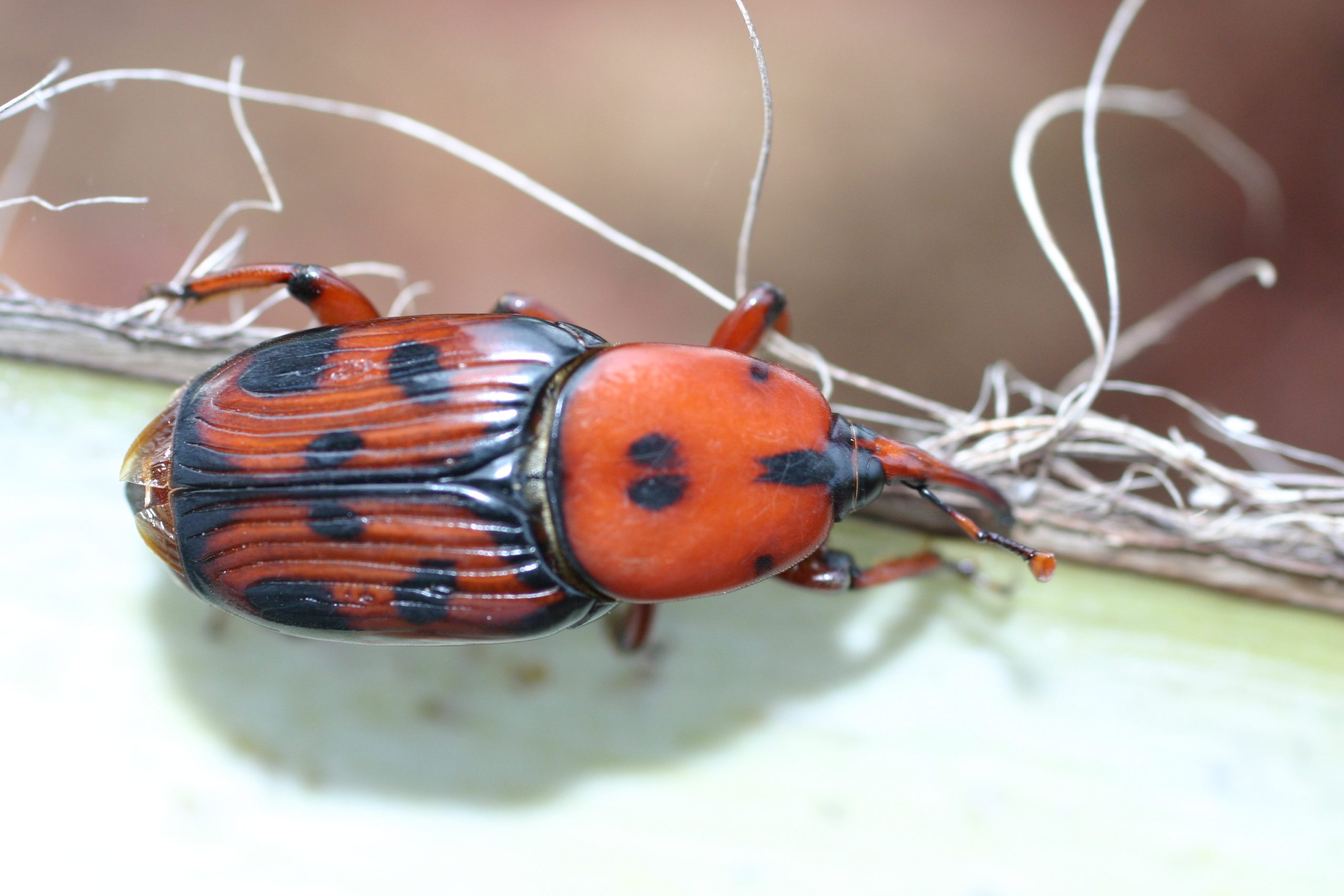
Damage
The palmetto weevil was once considered a minor pest, attacking only severely wounded and dying palms. However, it apparently now attacks healthy Canary Island date (Phoenix canariensis), Bismarck (Bismarckia nobilis), and to a lesser extent Latan (Latanis spp.), Washington (Washingtonia robusta), coconut (cocos nucifera) and cabbage (Sabal palmetto) palms.
The immature grub stage is the cause of the destruction. They feed in large numbers on the apical meristem, located at the top of the trunk. With only a single apical meristem, or growing point, the palm eventually succumbs. Kill the meristem, you kill the palm. The paths to destruction are extensive feeding tunnels surrounding and inside the meristems. Fungal rot usually follows further undermining the palms.
Perhaps, one of the first visible symptoms of palmetto weevil infestation are darkly colored streaks, from decomposing material, emanating from the top of the trunk. If you are close enough you might be able to detect a foul odor. Often, the next indication of an infestation is the drooping of older leaves. As the infestation progresses, the newer central growth of leaves, that are in some ways still associated with the apical meristem, topples, and may even detach from the trunk. This condition is known as “popped neck.” If the palm is pulled apart at this stage, larvae, cocoons, and even adults may be found within the crown region. Exit holes about the diameter of a quarter are found at the base of the collapsed leaves. Soon after this stage, complete collapse of the older drooping leaves follows eventually falling away from the palm.
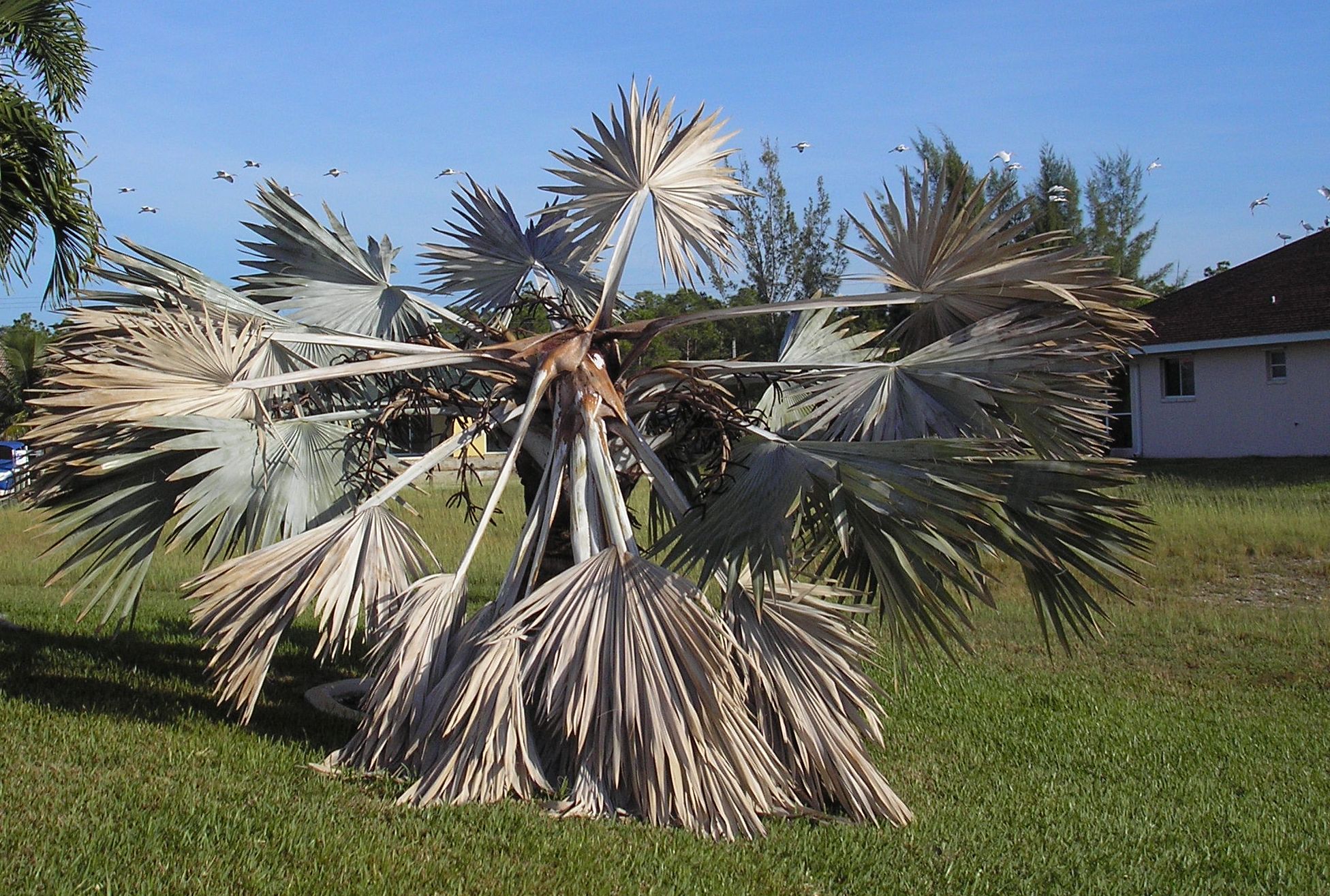
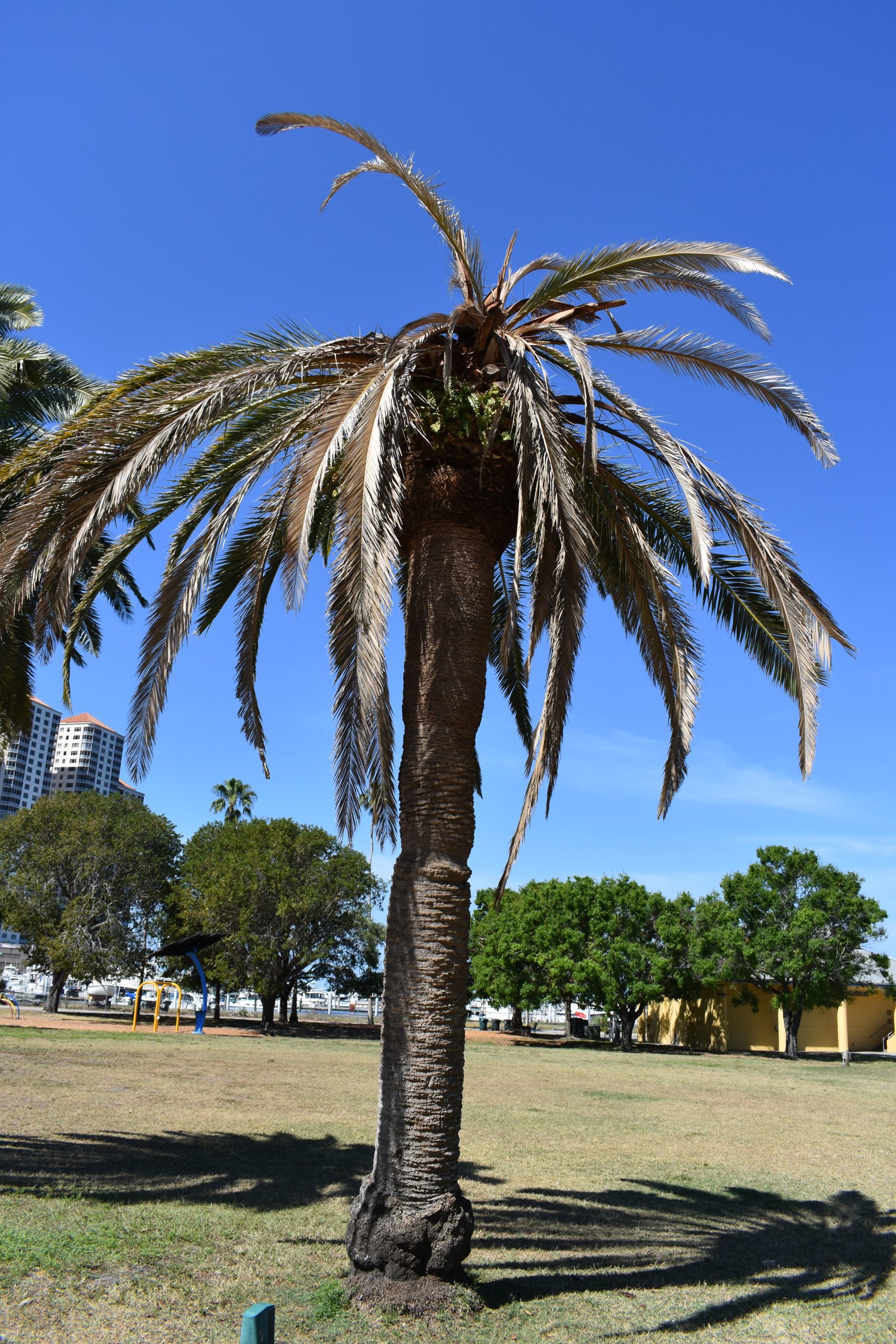
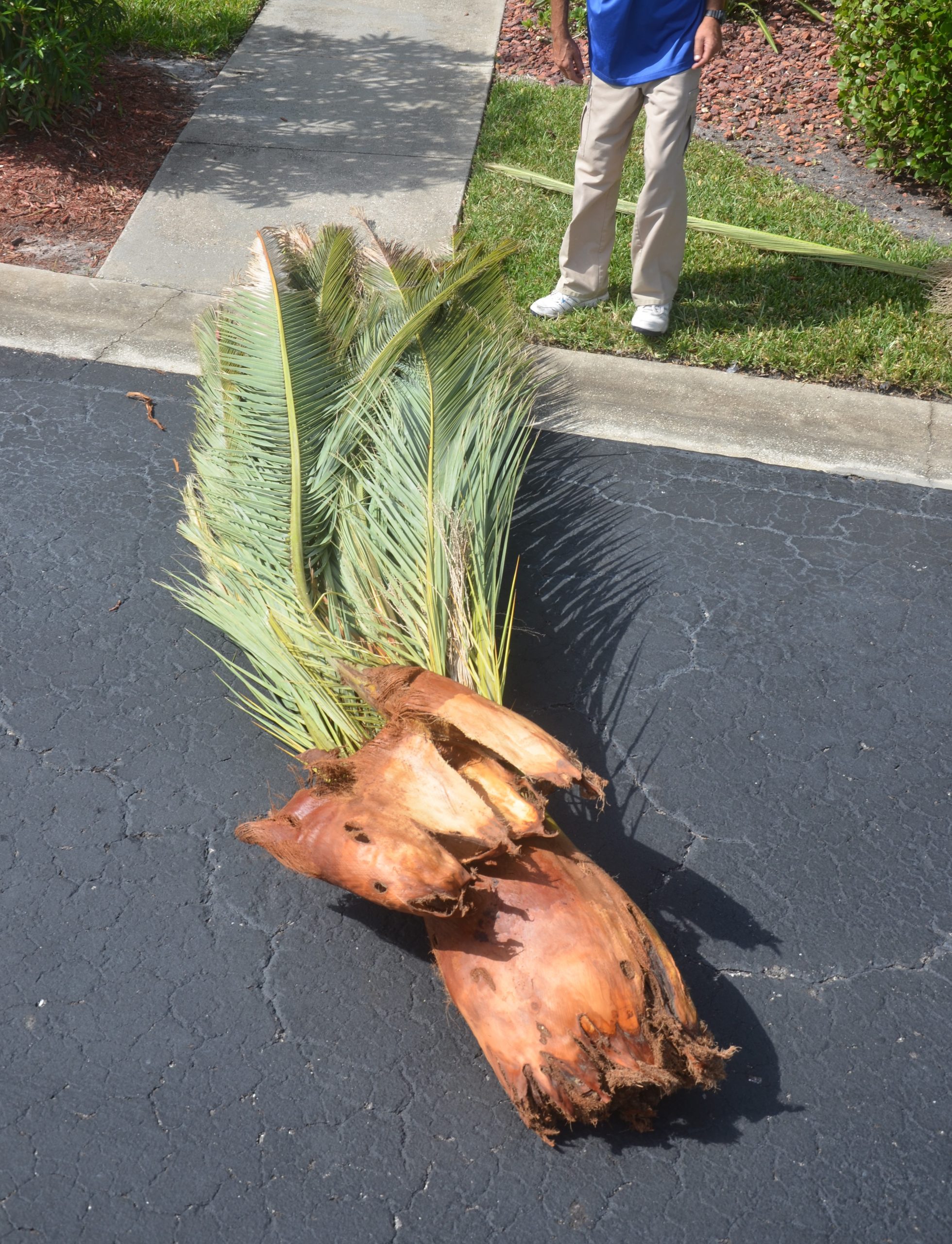
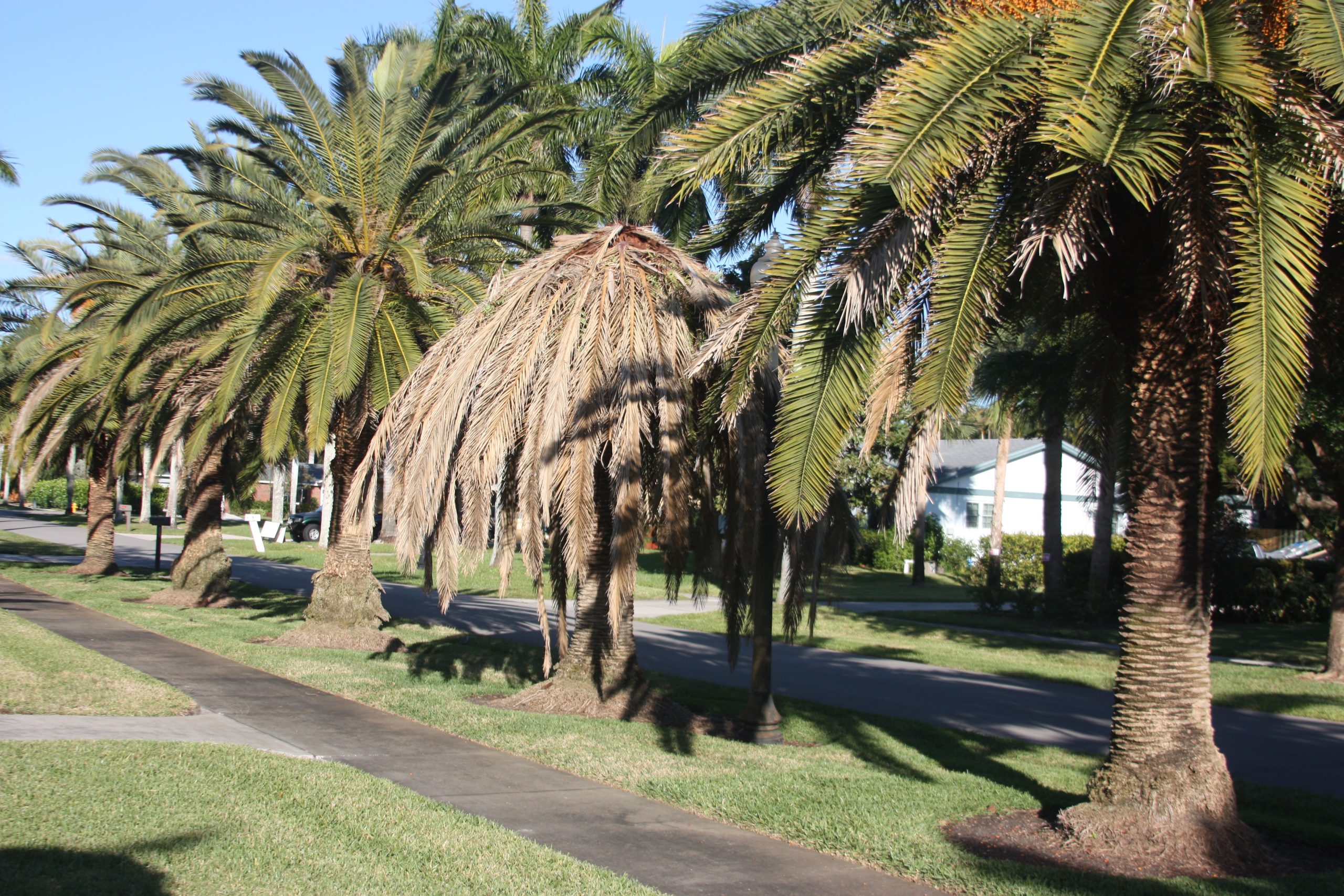
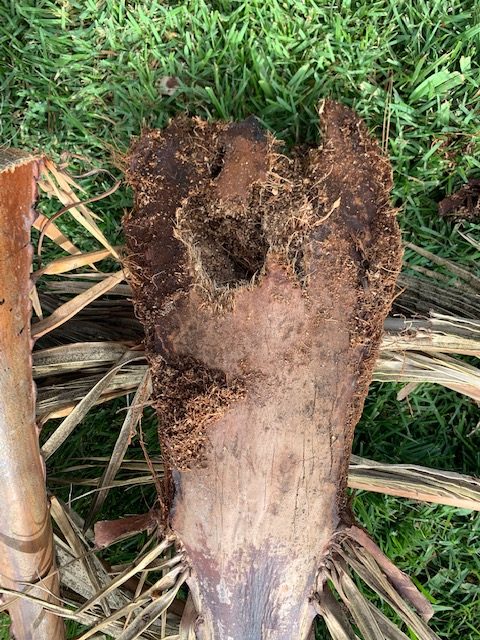
Management
Early detection of weevil infestation is difficult, and treatment even in the early stages of infestation may to too late to save the palm depending on the amount of damage to the apical meristem. Once the palmetto weevil damage is visible, there is no hope of recovering the injured palm. Infested palms should be removed and disposed of as quickly as possible to prevent further risk to associated palms. Nearby palms can be prophylactically treated with several applications of a systemic neonicotinoid insecticide, spaced about a month apart. For high valued newly transplanted palms, it is recommended that an insecticidal soil or crown drench be done twice or more a year until the palm is fully established, a process that usually takes one to two years. Some palms, such as the Canary Island and cabbage palms are routinely over pruned. Avoid such practice. It is said that fresh wounds emit an odor that attracts airborne adult males to land on a potential host palm.

If you suspect palmetto weevils, call your local UF/IFAS Extension Agent. They are there to provide the latest information on the treatment of this and other landscape pests. All pictures by Stephen Brown.
Resources
Brown SH. December 8, 2029, Palmetto weevil in Bismark palm (video). https://www.youtube.com/watch?v=jTjFmXXRlGg
Cranshaw W, D. Shetlar, 2018. Garden Insects of North America: The ultimate guide to backyard bugs. Princeton University Press, Princeton, New Jersey
Howard FW, Moore D, Giblin-Davis RM, Abad RG. 2018. Princeton University Press, Princeton, New Jersey
Source: UF/IFAS Pest Alert
Note: All images and contents are the property of UF/IFAS.



